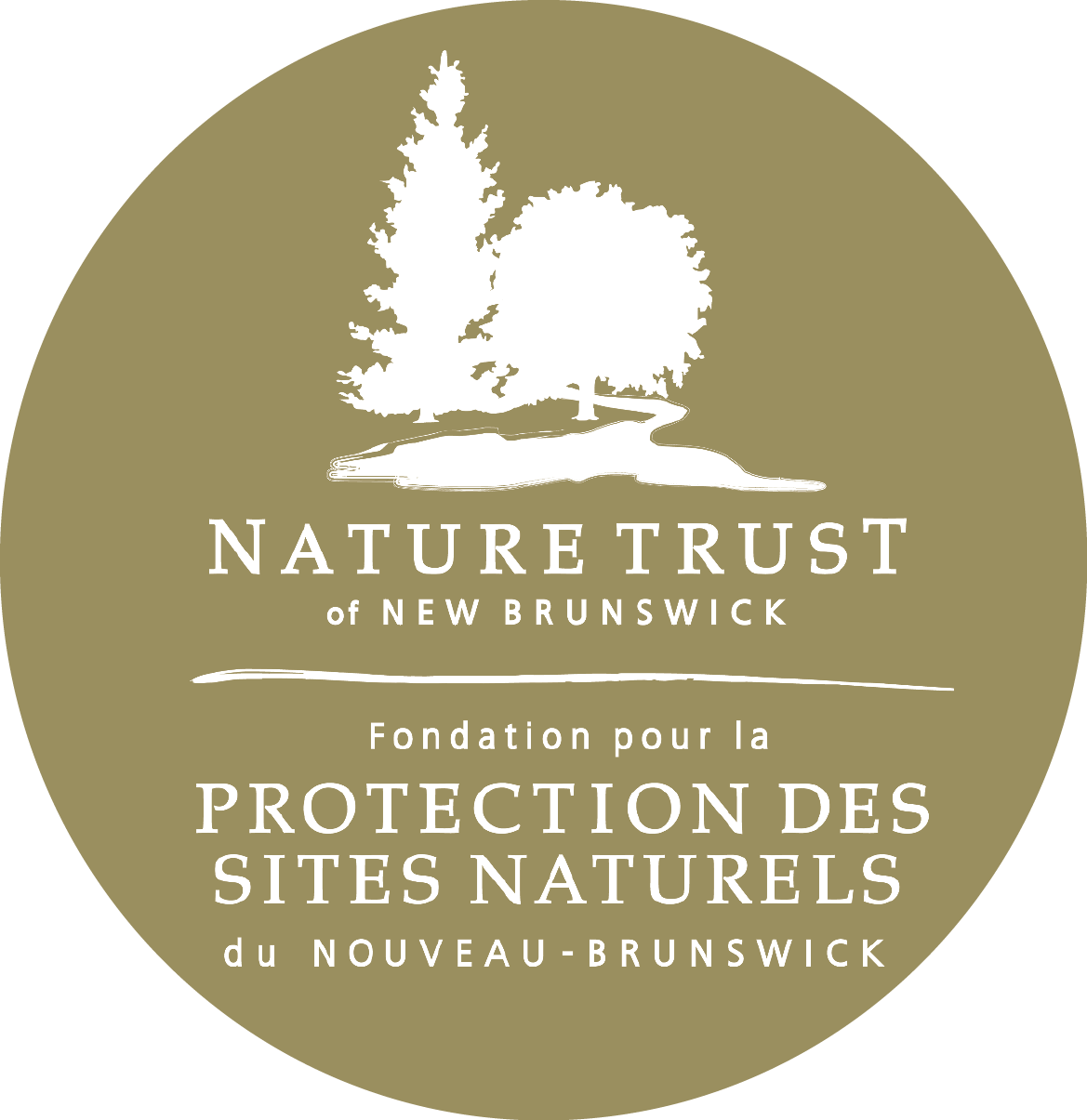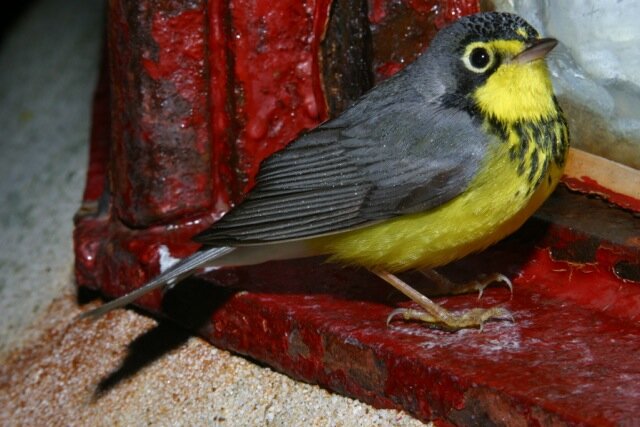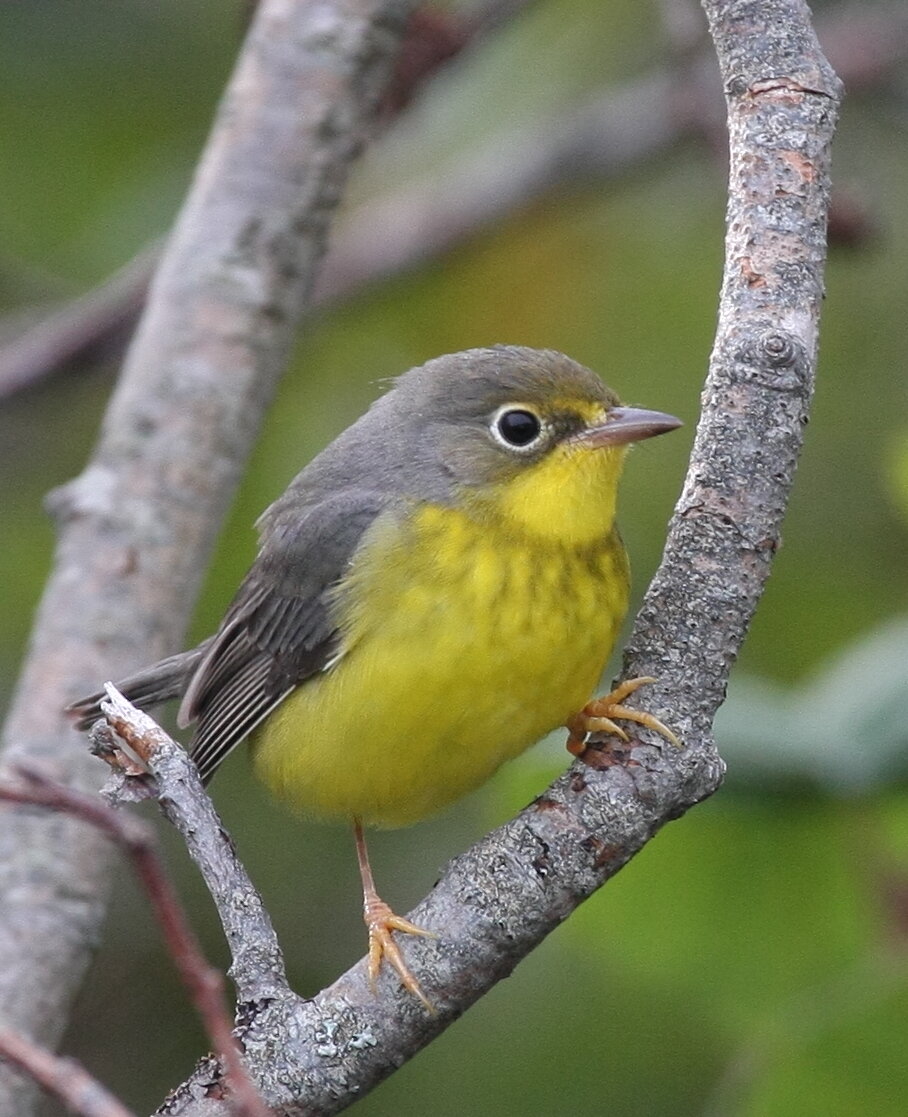(Cardellina canadensis)
Status: Threatened (SARA); Special Concern (COSEWIC)
This means that without some form of action, they could disappear from Canada or the entire planet.
Identification guide:
Bubbly song, that starts with a “chirp” sung from shrub perch.
Male has a distinctive “necklace” of black streaks across a bright yellow throat and breast.
Head, back, wings and tail are dark bluish grey.
White ring around the eye that resembles a pair of glasses.
Female is duller in colour.
Song at www.natureinstruct.org/dendroica
Habitat & Behaviour
The Canada warbler (Cardellina canadensis) can be recognized by its contrasting dark blue-grey upper parts and bright yellow throat and underside. A striking pattern of black markings across its breast creates the impression of a necklace.
This forest-dwelling warbler has a short breeding season (late May to early August), arriving later than most other songbirds and leaving early. It is found in moist, mixed forests with a dense understory and abundant moss cover. New Brunswick’s shrub and forested wetlands often provide excellent habitat for this species. It can be found in either young forest or mature forest, as long as there is a well-developed shrub layer. Its nest is well hidden in mounds of moss, upturned roots of trees, or perhaps tight groupings of saplings. It may return to the same territory in successive years.
The Canada warbler feeds on insects and spiders, gleaning them from low branches and leaves or by fly-catching as it flits from bush to bush in the forest understory.
Threats
The Canada warbler has experienced significant declines throughout much of its range, including eastern Canada. The reasons for the decline are unclear; potential factors include habitat loss, particularly on its wintering grounds in South America. Like all migratory birds, Canada warblers, and their nests and eggs are protected.
Ways You Can Help
Identify and maintain potential Canada warbler habitat on your property (damp forest with a dense shrub understory).
Be on the lookout for this species in suitable habitat. Leaving these areas undisturbed during June and July could help increase species survival in your area.
This project was undertaken with the financial support of Environment Canada.
References: Reitsma 2010 in The Birds of North America Online; COSEWIC 2008; National Audubon Society 1995.
To find out more about Species at Risk conservation, contact our Conservation Planning Manager, Carli Le Roux, below
or by calling (506) 457-2398.



